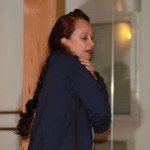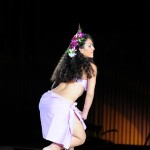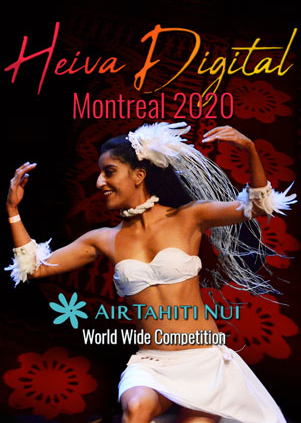Choosing the Correct Dance Instructor
There are good Tahitian dance instructors all over the world. There are also very bad teachers, to say the least. Tahitian dance instruction has become a lucrative business and many people use it as a profitable activity.
 It is possible to find solid teachers in any country. I once had dancers in my school in Tahiti that came from Finland and had learned to dance from a Mexican instructor. The methods in which this instructor had taught them were perfectly correct, despite the fact that they did not know the names for each step. One of the dancers was also an instructor in Finland.
It is possible to find solid teachers in any country. I once had dancers in my school in Tahiti that came from Finland and had learned to dance from a Mexican instructor. The methods in which this instructor had taught them were perfectly correct, despite the fact that they did not know the names for each step. One of the dancers was also an instructor in Finland.
A bad teacher will give students the impression that Tahitian dance is difficult to learn and perform.
Ineffective instruction will provide students with the wrong movements, which are very difficult to correct once learned. Ineffective instruction can also lead to students executing the wrong body movements, which can result in bodily harm. Therefore, ineffective instruction will never provide students with the joys of dancing, which is an essential characteristic of Ori Tahiti.
 During dance and after, students should never feel pain or discomfort aside from thigh and hip muscle stiffness, which is normal.
During dance and after, students should never feel pain or discomfort aside from thigh and hip muscle stiffness, which is normal.
Backache during dance can be detrimental to a students learning ability and lumbar pain during dance is often associated with spine deformity, which is a contraindication to the practice of Tahitian dancing.
Other leading causes of backache during Tahitian dance include but are not limited to bad position and incorrect foot ground supports.
It is the instructor’s responsibility to recognize and correct possible injury causing mistakes. When something is wrong, more often than not it is due to improper foot position.
The teacher must take into account the students’ morphology and natural supports. An affective instructor understands that you must never force a student to execute fast hip movements (faarapu, faarori, and ueue) in the same manner as an experienced instructor.
Each student must learn to move his or her hips in a distinct natural direction, either to the left or to the right. This natural movement depends upon the student’s strong foot in the same manner that athletes depend upon either their left or right foot to do the long and high jump, to pole vault, to shot-put, etc.
 I have had multiple opportunities during workshops abroad to meet individuals who had learned to move their hips in the same manner as their previous instructor. This is utter nonsense. One would be unable to find a school or dance group in Tahiti that ignores this basic principle of hip movement.
I have had multiple opportunities during workshops abroad to meet individuals who had learned to move their hips in the same manner as their previous instructor. This is utter nonsense. One would be unable to find a school or dance group in Tahiti that ignores this basic principle of hip movement.
If a student is unsure of his or her natural direction, it is the instructor’s duty to help the student in finding it. Students who are not lateralized are not uncommon, but this can be easily corrected with proper instruction.














